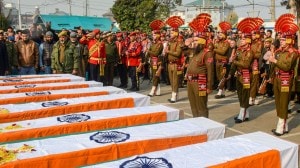Circles Of Enchantment
...

| The Imam and the Indian By Amitav Ghosh Ravi Dayal & Permanent Black Price: Rs 495 |
That rowdy category of writers known as the Indo-Anglian school is much abused! Marathi and Bengali writers profess their disgust at V.S. Naipaul’s derisive posture. Other readers voice their loathing of Arundhati Roy’s unabashed self-promotion. Critics pour scorn on Vikram Seth’s literary millions. But among all this hatred, Amitav Ghosh somehow stands apart in a place far removed from the traumatic celebrity of the other award-winners. Ghosh is the calm, honest scholar, the writer of integrity, the quietly heroic academic novelist who has created tender (The Shadow Lines) and terrifying (The Calcutta Chromosome) adventures through history and different societies. The Imam and the Indian will consolidate Ghosh’s image among the reading public.
The Imam and the Indian is a collection of Ghosh’s articles, lectures and translations spanning over two decades. A deceptively gentle style conceals cavernous depths of imagination. Ghosh unearths lost lives from centuries past, he shows how the metaphysical is contained within the mundane, he suggests that a critique of the Enlightenment need not lead directly to nativism if such critiques are grounded in nuanced and meticulous research. He is continually thoughtful, stately rather than vivacious, responsible rather than rakish.
One of the pieces, The Slave Of MS.H.6, is a quest for the subaltern, Ghosh’s search for an individual who lived in the 12th century but wrote nothing about himself and thus left behind no records of his life. The ‘‘slave’’ is a phantom, who appears only coincidentally in a set of letters exchanged between two 12th century merchants. But this unknown slave might have witnessed the Crusades and his life might provide important clues about the fact that ‘‘slavery’’ was not slavery as we understand it today but a quasi-professional relationship between groups unrelated by blood. Ghosh goes ghost-hunting and finally finds the spirit of ‘‘Bomma the Slave,’’ hiding eerily in a research institute.
Elderly Sikh couple clambering over a wall into their neighbours’ welcoming South Delhi home during the 1984 riots becomes an example of how the stories of every act of violence conceal the civil response to them. Deep in an Egyptian village Ghosh finds the faces of coffee-house academics and shows how an argument between an Indian student (himself) and the imam of the village becomes a dialogue between ‘‘two delegates of superseded civilisations vying with each other to lay claim to the violence of the West’’. Ghosh’s portrait of his friend, the poet Agha Shahid Ali, who even while dying of cancer rushes through a hospital word crying out phrases from Lorca or mocks one of his South Asian students in class is poignantly revelatory perhaps of the author’s own mockery of his own ‘‘South Asian’’ disease in America. Perhaps the only wish in these essays is that the emotional seductiveness of the novelist did not sometimes become eclipsed by the dispassionate eye of the academic.
Yet Ghosh answers the call of the desert. Travelogues, Ghosh writes, are an integral part of Bengali literature and Ghosh, himself completely bilingual, as well as fluent in Arabic reflects in many ways the wonder and adventurous romanticism of the travelling Bengali. ‘‘They (the two straight lines which form the boundary of four American states) slice through the tabula rasa of the New World leaving it crafted in their own image, enchanted with a new enchantment, the magic of Euclidean geometry.’’ Above all Ghosh remains fascinated by the mysterious manner in which the written word leaves its mark on the physical world. He says about novels: ‘‘It is the story that gives places their meaning. This is why Homer leaps at us from signs on the New York turnpike, from exits marked Ithaca and Troy; this is why Ayodhya of the Ramayana lends its name equally to a street in Benares and a town in Thailand.’’





- 01
- 02
- 03
- 04
- 05

























